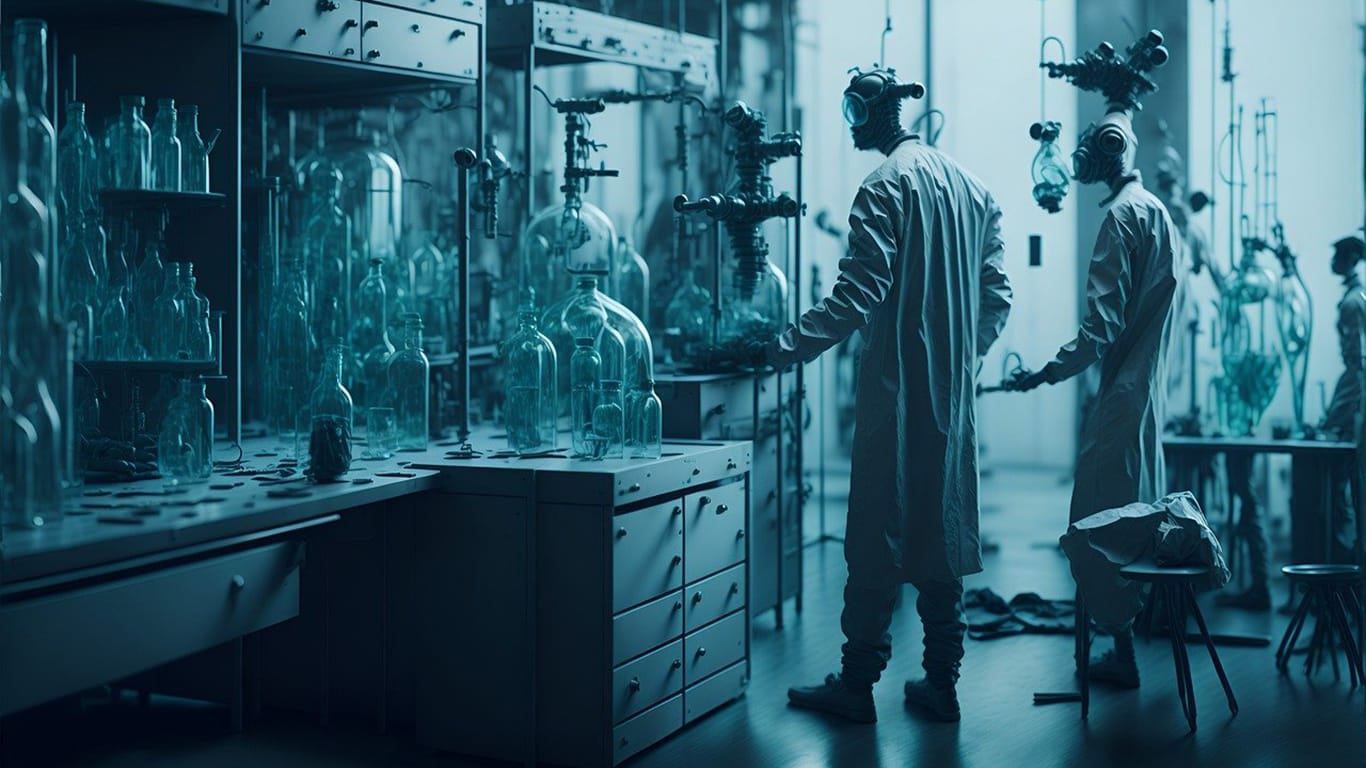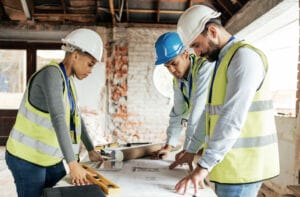Metro Phoenix’s bioscience industry is expanding its physical footprint, improving Arizona’s healthcare capacity and growing the economy along with it. Cushman & Wakefield’s September Life Sciences Update shows that the Phoenix bioscience boom has attracted 140 healthcare startups and 772,000 square feet of total lab inventory, with another 600,000 square feet proposed. At the same time, venture capital investment in life sciences has swelled to $76 million for the first half of 2023 — 67% higher year-over-year, according to the report.
In her State of the City address on April 12, Phoenix Mayor Kate Gallego announced that Park Central and Midtown Phoenix is now the Phoenix Medical Quarter, adding to the city’s other bioscience hubs — the Phoenix Bioscience Core and Discovery Oasis.
“The city and I want to show that we are prioritizing this [industry] and that we are part of the vision to make sure it succeeds,” Gallego says. “We have found that biomedical investments are most successful when the private sector and the city are aligned and partnering together.”
The City of Phoenix has worked hard to ensure that planning and zoning accommodates development, Gallego continues, and the Phoenix Industrial Development Authority has been a significant financial partner for the Discovery Oasis bioscience hub around Mayo Clinic in North Phoenix. The new 120-acre corridor will double Mayo Clinic’s education and research capacity and create 20 new biomedical and translational research labs.
“When we have these clear priority areas, we feel like that’s a signal to both the medical industry as well as the real estate industry, that we are all in and making sure it’s a success,” Gallego says.
One recent announcement highlights this success: the National Institutes of Health (NIH) signed a lease in the Phoenix Bioscience Core for the Phoenix Epidemiology & Clinical Research Branch of the NIH’s National Institute of Diabetes and Digestive and Kidney Diseases (NIDDK). This research center will occupy the entire 7th floor of 850 PBC building, comprising about 35,000 square feet.
LEARN MORE: National Institutes of Health signs huge lease in Phoenix Bioscience Core
“The NIH commitment to Greater Phoenix is a tremendous signal of the quality of work that’s happening in the region,” explains Chris Camacho, president and CEO of Greater Phoenix Economic Council (GPEC). “At these hubs, dozens of major players in bioscience work in close proximity and the talent and resources the NIH brings to the Phoenix Bioscience Core will contribute incredibly to furthering collaboration and innovation, work which will improve the health of Arizona’s communities and future generations.”

PHOENIX MEDICAL QUARTER
Long before Park Central was named part of the new Phoenix Medical Quarter, the parcel was home to the Central Avenue Dairy, which was converted into an outdoor mall in 1957. Throughout the decades, competition with newer indoor malls led to retailers’ departure and precipitated the property’s decline. With the Great Recession, it struggled even more, until Plaza Companies and Holualoa Companies acquired Park Central after having worked together on SkySong.
“Many people tried to acquire it and just weren’t able to figure out how to put the project together,” recalls Sharon Harper, president, CEO and co-founder of Plaza Companies. “We were able to crack that code and bring two separate parcels together to create a dynamic new masterplan that looks to the future, yet utilizes the rich history, neighborhood embeddedness and the existing architectural designs. We then looked at what the industries of the future would be and how to attract them, and that’s what Park Central has become.”
Part of this transformation included bringing in Creighton University’s nearly 200,000-square-foot Virginia G. Piper Health Sciences Campus to Park Central, which offers a full medical school, along with pharmacy, physical therapy, occupational therapy, physician assistant and accelerated nursing programs. The university has approximately 6,000 square feet of simulation space on campus and more than 50 simulation rooms for honing clinical and surgical skills.
Other bioscience, healthcare and education organizations have also joined Park Central, such as WearTech Applied Research Center, RadNet imaging clinic, Alliant School of Nursing, WCUI Smith Chason and DMG Children’s Rehabilitative Services.
Just west of Park Central is Dignity Health St. Joseph’s Hospital and Medical Center Campus, where Barrow Neurological Institute — one of top neuroscience hospitals in the world — recently opened a five-story, 130,050-square-foot facility, known as the Barrow Neuroplex. Barrow also announced plans to develop a new 10,000-square-foot dry laboratory at Park Central, called the Barrow Neuro Analytics Center, to research neurologic diseases.
These areas are connected by Third Avenue, which Harper says the City of Phoenix is planning to beautify so it’s more than just a thoroughfare for cars.
“It will combine the whole medical quarter together,” she continues. “Obviously, we need to get cars through there and accommodate patients, but there will be art and it will be more walkable. It’s about creating a sense of placemaking, and it’ll be the result of input from the different businesses and the community. A lot of different needs have to be met, but that can be done with style, safety and create a sense of arrival to the Phoenix Medical Quarter.”
Creighton University President the Rev. Daniel Hendrickson says that the designation of the Phoenix Medical Quarter is a recognition of the partnerships, innovation and commitment to healthcare and health education in the area.
“What Creighton brings to that is our specialty in interprofessional education in the health sciences, which is a collaborative care approach,” he continues. “It brings our medical students to the same table with nursing, pharmacy and therapy students to do case studies and talk about situations in healthcare. We’ve built a building to achieve this interprofessional education approach, which we know from our own studies and others, creates more affordability in medicine and more efficiencies for medical care.”
Instructors also benefit from the proximity of the other professionals. Hendrickson notes that there are premier institutions within the Phoenix Medical Quarter, which promotes similar synergies that Creighton students experience.
“Everyone is always stronger together,” he says.
SIDE EFFECTS
Having a loved one receive a serious diagnosis is a disruptive event that can cause a serious burden even under the best circumstances. As these clusters of healthcare innovators continue to mature, the entire region benefits both from a higher level of care being available close by, and from the impact on the overall economy.
“I want our residents to be able to get the very best healthcare in Phoenix,” Gallego says. “We are now a leader in a wide variety of areas. People come from all over our region to get transplants at places such as [St. Joseph’s Hospital]. We had the Saudi royal plane at Sky Harbor because a member of the royal family felt like they could get the best care in the Phoenix area.”
Having environments such as Phoenix Bioscience Core, Phoenix Medical Quarter and Discovery Oasis encourages the cross-sector collaboration needed to make medical breakthroughs by comingling institutional research, cutting-edge companies, labs and shared spaces.
“In the long term, innovations produced here will contribute to better health outcomes and reduction in health disparities while transforming healthcare delivery,” Camacho notes.
These hubs not only promote a healthier population, but a more resilient economy. Top-tier companies such as GE Healthcare and W. L. Gore & Associates are making life-saving products in Phoenix, Gallego adds.
“CBRE named us one of the fastest growing emerging life science markets,” she continues. “We had a 33% increase in life science researchers. We also have amazing startups, many of whom are in the Wexford building [within the Phoenix Bioscience Core].”
Healthcare and biotech jobs are also pathways to good wages. In 2022, the average annual salary for jobs in healthcare and bioscience was 4.2% higher than the regional average for all private industries, according to Camacho.
“Educational and training programs are key features of these bioscience and healthcare hubs where students can gain experience in world-class research labs and clinics which will further support the region’s ascending industry workforce,” he says. “Between 2019 and 2022, Phoenix was a top 10 U.S. market for life sciences employment growth with a 23% increase and was also a top 15 market for life sciences R&D employment with 36% growth.”
The bioscience industry is intimately connected with many other sectors, including semiconductor manufacturing. More than 50% of medical devices use semiconductor chips, and that number is expected to grow. The investments from both TSMC and Intel in Greater Phoenix strengthens the bioscience industry’s technological infrastructure by, “enabling the production of advanced components for medical devices and biotech equipment necessary for research,” Camacho says.
“The growth of both industries in the region,” he concludes, “means a more secure manufacturing network, more opportunities for domestic innovation and development of cutting-edge devices that will drive research breakthroughs.”




